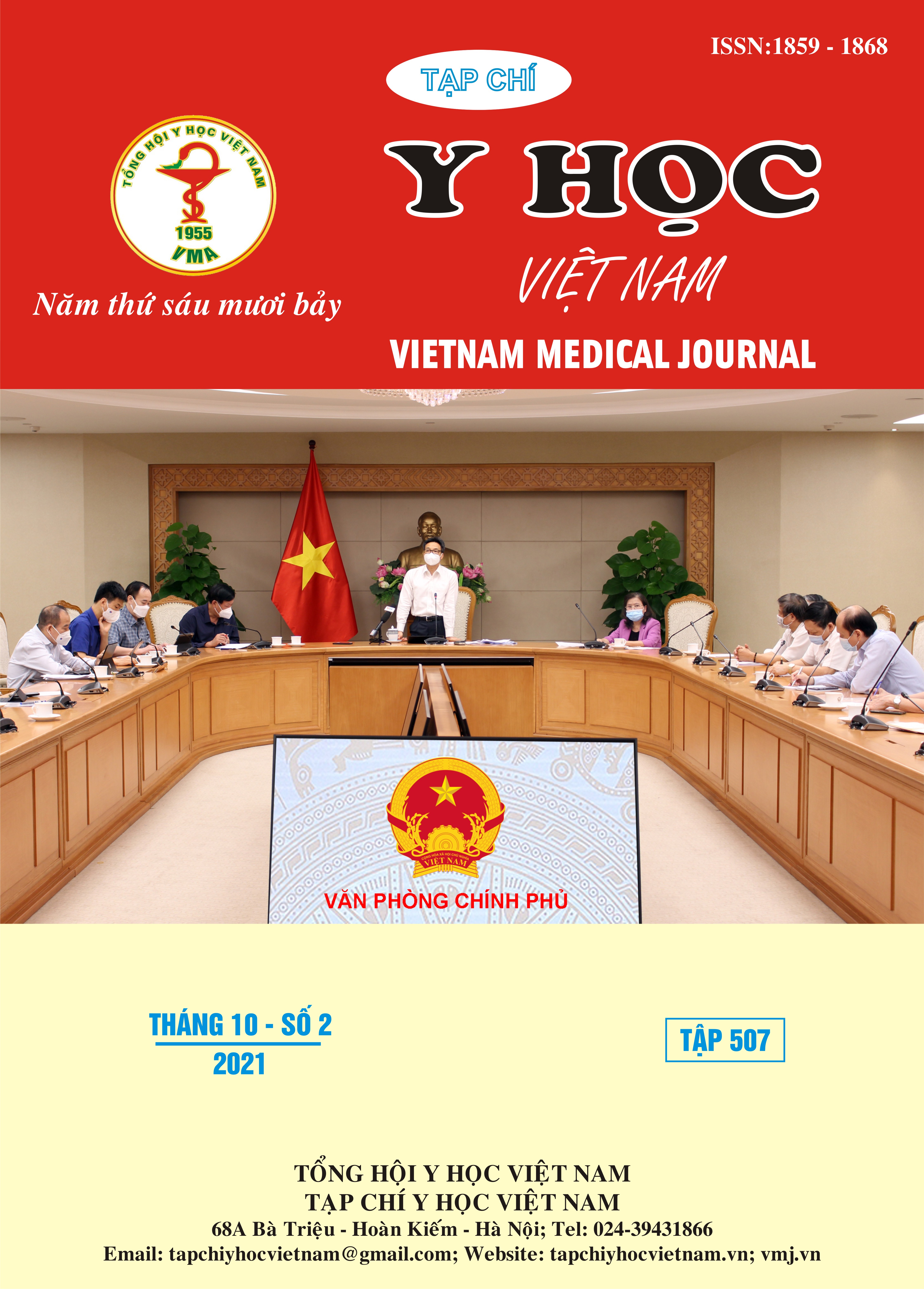SURVEY VALUE OF FRUCTOSAMINE SERUM IN MONITORING AND TREATMEANT PATIENTS OLD AGE DIABETES TYPE 2 AT THE HUU NGHI HOSPITAL
Main Article Content
Abstract
Fructosamine (FA) is a glycosylated albumine product. Like HbA1C, glucose binds to albumine in a proportional manner and, once attached, cannot be separated again. The lifetime of FA is associated with the half-life of albumine in the body of about 20 days. Therefore, fructosamine is also used to assess the patient's blood glucose control with the advantage of a 2-3 week period, suitable for assessing the patient's blood glucose in a short period of time, blood glucose concentration rapidly changing blood glucose levels, during the inpatient period of the hospital, especially in elderly diabetic patients as well as in patients with hemodynamic disorders and other diseases. blood theory. Aims: To investigate the value of serum fructosamine in blood sugar control in patients with type 2 diabetes at huu nghi Hospital. Methods: a cross-sectional, prospective study The study population included 50 patients with confirmed diagnosis of type 2 diabetes, aged 60 years and older. From February 2021 to August 2021. Result: The average fasting, postprandial blood glucose concentration of the study subjects decreased significantly during the hospital stay. The mean difference of fasting, postprandial, mean at hospital admission and discharge, respectively 9.0 mmol/L, 4.7 mmol/L, 6.8 mmol/L and were all significant. listed at the threshold of probability p < 0.0001. The percentage of study subjects who achieved the goal of fasting blood glucose control increased significantly after the hospital stay. At hospital admission, 0% of the study subjects had fasting blood glucose levels that reached the fasting blood glucose control target, and at discharge, 36.0% of the study subjects reached the fasting blood glucose control target. The percentage of study subjects who achieved the goal of controlling blood glucose after meals increased significantly after the hospital stay. The rate of achieving the goal of postprandial blood glucose increased from 12.0% upon admission to 68.0% when the patient was discharged. Among the study subjects who did not achieve the goal of blood glucose control, the blood glucose concentration at hospital discharge was much improved compared to when admitted to the hospital. The mean difference between blood glucose before and after fasting treatment was 9.0 mmol/L, after eating was 5.4 mmol/L (respective p-values were all lower than 0.0001). The mean fructosamine value at hospital discharge was much lower than that at hospital admission, with an average of 68.7μmol/L (360.6 ± 69.9 μmol/L versus 429.3 ± 62.2 μmol/L) which was statistically significant with p < 0.0001. Conclusion: Proportion of patients reaching treatment goals through fasting glucose index and fructosamine was 36.0% and 30.0%, respectively. Kappa coefficient is 0.7748 (highly agree) - Average glucose in fasting, 2 hours after eating, average and fructosamine decreased by 9.0 ± 4.4mmol/L, respectively; 4.7±4.3mmol/L; 6.8 ± 3.3mmol/L; and 68.7±90.2mol/l. - The mean fructosamine value at hospital discharge was much lower than that at hospital admission, with an average of 68.7 μmol/L (360.6 ± 69.9 μmol/L versus 429.3 ± 62.2 μmol/L) with statistical significance. with p < 0.0001. - On admission, 100% of patients did not achieve the goal of blood sugar control based on the fructosamin index
Article Details
Keywords
Fructosamine, Type 2 diabetes, Glucose, HbA1c, diagmosis
References
Committee, Sixth edition, pp. 11-37.
2. David K McCulloch, MD. Estimation of blood glucose control in diabetes mellitus. Literature review current through: Oct 2012. This topic last updated: Oct 25, 2012. ].
3. American Diabetes Association (2009), Standards of Medical Care in Diabetes-2011, Diabetes Care, 34 (1), pp. 11-61.
4. American Diabetes Association (2011), Standards of Medical Care in Diabetes-2013, Diabetes Care, 36 (1), pp. 11-66.


